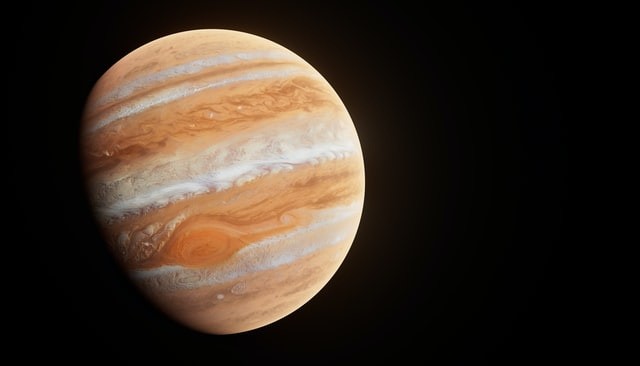Since astronomers discovered the first planets orbiting stars other than the Sun, they have discovered many worlds quite different from those found in the solar system. Many of these "exoplanets" are large gaseous planets roughly the size of Jupiter, orbiting their parent star every few days.
MIT astronomers see most clearly the eternal dark side of exoplanets that are "tidal-locked" to stars. Their observations, combined with measurements of the planet's eternal day, provide the first detailed insight into the Earth's atmosphere on exoplanets.
Astronomers studies the exoplanet

During passage, it is also possible to measure the composition of the atmosphere by detecting various gases that have passed through the atmosphere in the light of the stars.
But it only tells us something about the situation in one part of the globe. A new study of an exoplanet named WASP121b, published in Nature Astronomy, has been able to directly explore Hot Jupiter's Earth's atmosphere in unprecedented detail.
According to Phys.org, the planet orbiting very close to its parent star is surrounded by permanent sunlight on one side and permanent nights on the other.
Depending on how close their orbits are, the "daytime" can reach very high temperatures, sometimes even above the coolest star temperatures. Daytime temperatures can be measured by calculating the difference between the total amount of light for stars and planets combined and the total amount of light for stars alone.
The WASP121b was discovered by the Super WASP telescope in 2015. During the day, temperatures reach over 2,500K (2,226.85 ° C). Gas giants are mostly composed of hydrogen molecules and helium, with few traces of other gases such as water vapor.
But at such extreme temperatures, molecules can break down into individual atoms, and electrons can even be torn from nuclei-as a result, atmospheric chemistry that is significantly different from that found on other planets.
The team calculates that the planet's water cycle that is maintained by winds that whip atoms around the planet at speeds of up to 5 kilometers per second, as per MIT News.
Also, it seems that water is not just circulating around the earth. Astronomers have found that the night side is cold enough to host an exotic cloud of iron and corundum-the minerals that make up ruby and sapphire. These clouds can foam like water vapor during the day when high temperatures evaporate the metal into a gas. Exotic rains can occur along the way, like liquid gems from corundum clouds.
Related article : Water Discovered in Atmosphere of 'Warm Neptune' Exoplanet
The 'dark side' of the exoplanet
The team observed WASP 121b using a spectroscopic camera onboard NASA's Hubble Space Telescope. This device observes the planet and the light from that star and breaks it down into individual wavelengths. Its strength allows astronomers to know the temperature and composition of the atmosphere.
Through spectroscopic studies, scientists have observed details of the daytime atmosphere of many exoplanets. But when it orbits the star, it's much harder to do the same for the night side, as it needs to pay attention to subtle changes in the entire spectrum of the planet.
The dark "nightside" of an ultra-hot planet like WASP 121b is not exposed to the light of the stars and instead stares forever at the depths of the icy universe. The only way it warms up is that the planet's atmospheric winds carry heat from daytime.
However, even with very strong winds, large temperature differences can be expected between day and night on the hottest planets. It can also affect chemical processes in the atmosphere.
© 2025 NatureWorldNews.com All rights reserved. Do not reproduce without permission.





